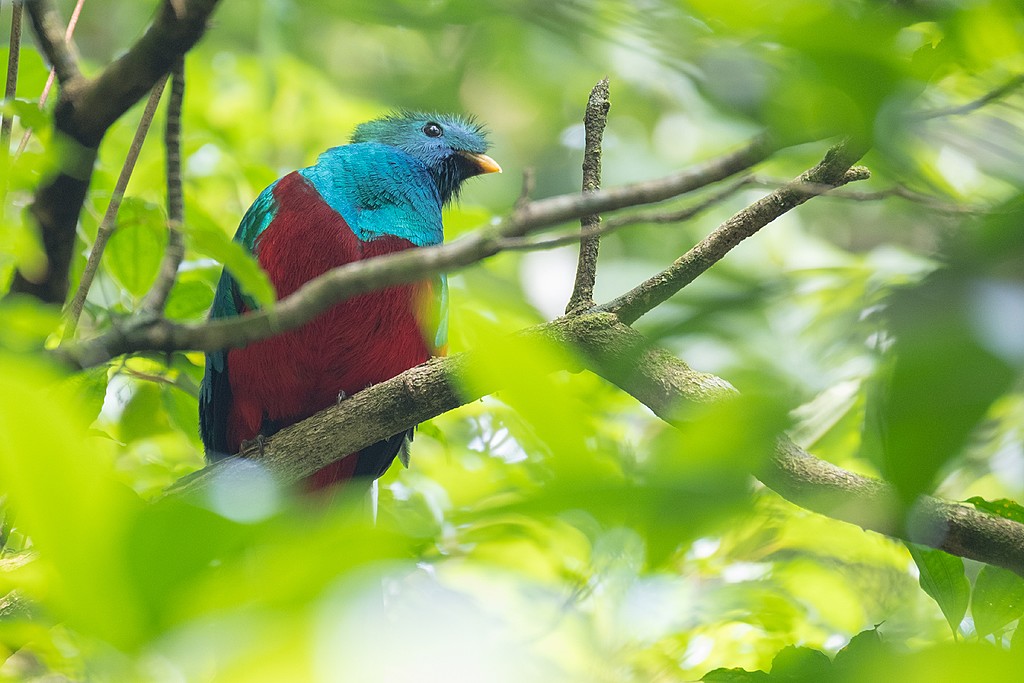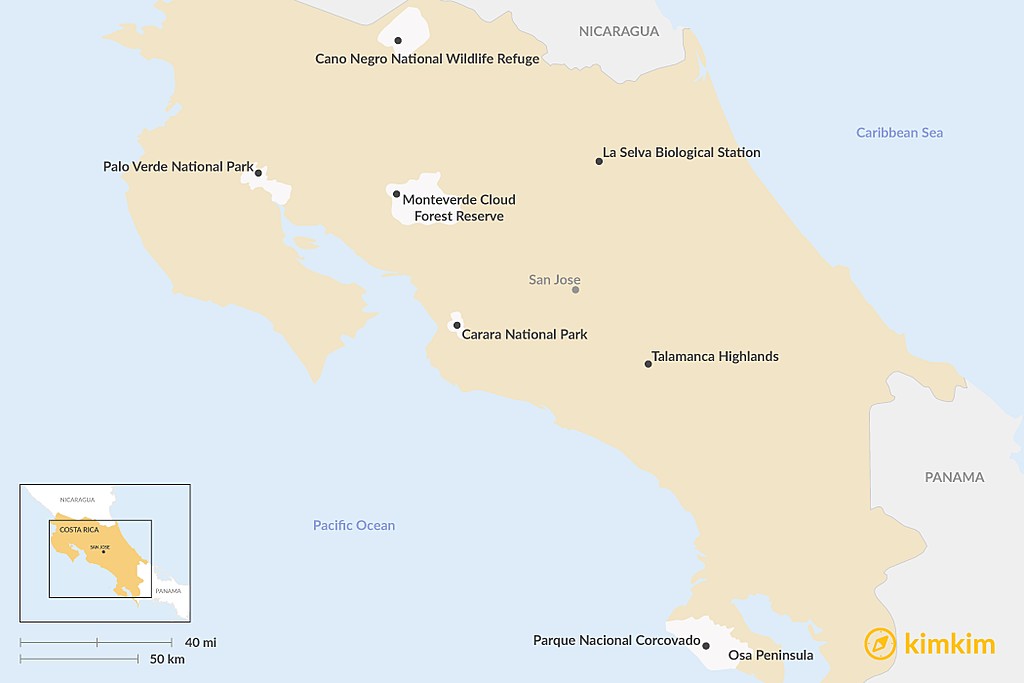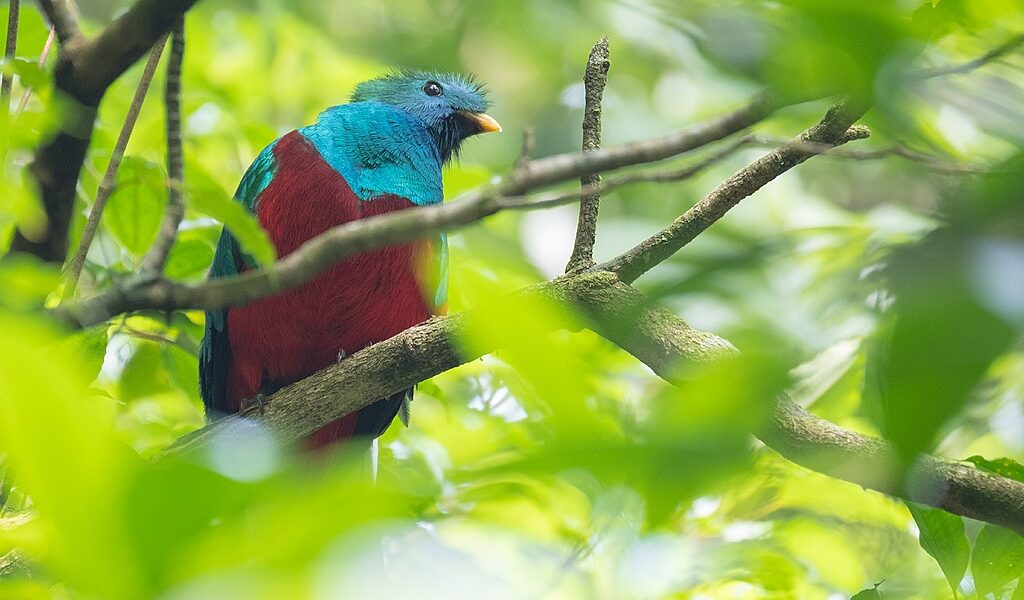
More than a quarter of Costa Rica is protected jungle, home to a wide variety of native wildlife—including 850 colorful species of birds. Learn about the country’s best areas to spot them, from the Osa Peninsula to the Monteverde Cloud Forest.
## A Birder’s Paradise: Exploring Costa Rica’s Avian Wonders
Costa Rica, a jewel of Central America, is renowned for its breathtaking biodiversity and vibrant ecosystems. It’s a haven for nature enthusiasts and, in particular, a paradise for birdwatchers. From lush rainforests to cloud-kissed mountains and sprawling wetlands, Costa Rica offers an unparalleled avian spectacle. Let’s embark on a journey to some of the country’s most remarkable birding destinations, each teeming with unique species and captivating landscapes.
**Cano Negro National Wildlife Refuge: A Symphony of Aquatic Birdlife**
For those with a penchant for aquatic birds, the **Cano Negro National Wildlife Refuge** is an absolute must-visit. Within this protected area, **Cano Negro Lake** and the meandering **Río Frío** stand out as prime locations for observing a diverse array of avian species. The most convenient way to access this natural wonderland is by taking a day trip from the charming town of **La Fortuna**, which lies near the majestic **Arenal Volcano**. As you venture into the refuge, prepare to be greeted by a mesmerizing ensemble of storks, graceful egrets, stately herons, and the strikingly beautiful roseate spoonbills, their pink plumage adding a touch of artistry to the scenery.
Keep in mind that the optimal time to explore the refuge is during the rainy season, which spans from May through mid-November. This is when the landscape flourishes in its emerald glory, the water levels rise, creating ideal habitats, and the birds emerge in their full splendor, showcasing their vibrant colors and engaging in captivating behaviors.
**Carara National Park: Where Rainforest Meets the Pacific**
**Carara National Park** holds the distinction of being the northernmost rainforest along Costa Rica’s Pacific coast. Its strategic location, a mere two and a half hours from the bustling capital of **San José**, makes it one of the country’s most frequented ecotourism destinations. Bird enthusiasts will be delighted by the park’s rich avian diversity, which includes the fiery-billed aracari, with its colorful beak, the iconic keel-billed toucans, known for their oversized bills, the elegant jacanas, often seen gracefully walking on lily pads, and the ever-watchful turkey vultures soaring overhead. Carara National Park is also celebrated for harboring one of the largest populations of scarlet macaws in Costa Rica, their vibrant red, blue, and yellow feathers creating a spectacle of color against the backdrop of the verdant rainforest.
To make the most of your visit and avoid the influx of tourists, it is advisable to arrive at the park early in the day. During the dry season, which extends from November through April, the park opens its gates at 7 am, while during the rainy season (May to mid-November), the opening time is 8 am. Within the park, a network of well-marked hiking trails beckons visitors to explore its hidden corners. Among these trails is the popular hike to **Bijagual Waterfall**, a cascading beauty that adds to the park’s allure.
**La Selva Biological Station: A Hub for Tropical Research and Birding**
Nestled within Costa Rica’s northeastern region, **La Selva Biological Station** is a protected area spanning 3,700 acres of pristine rainforest. Owned and operated by a consortium of universities and research institutions, this station serves as a temporary home to approximately 300 scientists and students each year, all dedicated to studying the intricate ecology of the rainforest. Over time, La Selva Biological Station has earned recognition as one of the foremost sites for tropical research, attracting researchers from around the globe. Its accessibility, located just two hours away from **San José**, has also contributed to its growing popularity as an ecotourism destination in its own right.
For birders, La Selva is an undeniable haven. The region boasts an astounding diversity of bird species, surpassing any other part of the country, with approximately 450 different species identified. Remarkably, half of these species are endemic to the area, meaning they are found nowhere else on Earth. The station offers numerous elevated walkways, providing birders with exceptional vantage points to observe and photograph these magnificent creatures in their natural habitat. Keep a watchful eye for the bare-necked umbrellabird, the great antshrike, and the enchanting Rufous Motmot, among the many other avian treasures that call La Selva home.
**Monteverde Cloud Forest Reserve: A Realm of Mist and Mystique**
In 2007, the **Monteverde Cloud Forest**, a reserve situated in the northwest of Costa Rica, was rightfully recognized as one of the country’s “seven wonders” by popular vote. This accolade underscores the cloud forest’s significance as a cornerstone of Costa Rica’s thriving ecotourism industry. Once you immerse yourself in the ethereal atmosphere of Monteverde, it becomes abundantly clear why it has garnered such widespread acclaim.
In this unique ecosystem, a veil of mist perpetually envelops the tree canopy, creating a dreamlike ambiance. The name Monteverde, meaning “green mountain,” perfectly captures the essence of this verdant and otherworldly environment. As you traverse its trails and elevated walkways, you’ll have the opportunity to spot a remarkable array of approximately 400 bird species. One bird that should be on every birder’s list is the show-stopping Resplendent Quetzal, celebrated for its resplendent plumage and legendary status.
**Osa Peninsula: A Biodiversity Hotspot**
The **Osa Peninsula**, located in the southeastern corner of Costa Rica, is home to the renowned **Corcovado National Park**. Among the country’s protected areas, this park is arguably the most coveted, attracting a diverse range of visitors, from intrepid hikers and backpackers to discerning luxury travelers. Its unparalleled biodiversity is the main draw, with rainforests teeming with an astonishing variety of flora and fauna, including elusive tapirs and majestic jaguars, playful squirrel monkeys, and the ever-spectacular scarlet macaws.
Approximately 350 species of birds inhabit the Osa Peninsula, including an impressive 16 species of hummingbirds. Near the peninsula’s lagoons, marshes, and rivers, you can observe a variety of waterbirds, such as the patient tiger heron, often perched on riverbanks, waiting for unsuspecting frogs and fish to venture within striking distance of its long beak. Even if you don’t venture into Corcovado National Park, the very act of being on the Osa Peninsula guarantees encounters with fascinating wildlife.
**Palo Verde National Park: A Wetland Wonderland**
**Palo Verde National Park**, primarily comprised of wetlands nourished by the **Tempisque River**, offers a unique perspective on Costa Rica’s avian diversity. The most rewarding way to experience the park is by embarking on a boat tour, which provides exceptional vantage points for bird watching. Unlike many other protected areas in the country, Palo Verde is relatively less mountainous, allowing for unobstructed views of the surrounding landscape. This less dense jungle translates to enhanced birding opportunities. The park is a haven for aquatic birds, including the tiger heron, the Jabiru stork, and the White Ibis, along with other captivating species such as toucans and macaws.
**Talamanca Highlands: A Trek Through Tropical Cloud Forest**
As you journey from central Costa Rica towards the southern Pacific coast, you’ll encounter the **Talamanca Mountains**. This imposing massif rises to higher elevations than many other mountain ranges in the country, with some peaks reaching heights of 11,500 feet. However, the majority of visitor accommodations and birding lodges are situated in the forested foothills near the shore. The higher elevations, in contrast, feature treeless *páramo* (alpine tundra) ecosystems. The area is accessible via Costa Rica’s main Highway 2, en route from **Cartago** to **San Isidro**.
Birders will be utterly captivated by the Talamanca Highlands, where it’s not uncommon to spot over 250 distinct bird species in a single day of exploration. Prepare to be enthralled by the vibrant colors of tropical species, such as the Resplendent Quetzal and the red-capped manakin, a charming little bird with a bright red head. Interestingly, the males of this species attract females by performing a mesmerizing moonwalk-like dance on tree branches.
Costa Rica’s avian wonders are truly a sight to behold. With its diverse landscapes and commitment to conservation, this Central American gem offers an unforgettable experience for birdwatchers of all levels. From the iconic Resplendent Quetzal to the vibrant scarlet macaw, the birds of Costa Rica are sure to leave a lasting impression.

B-546

